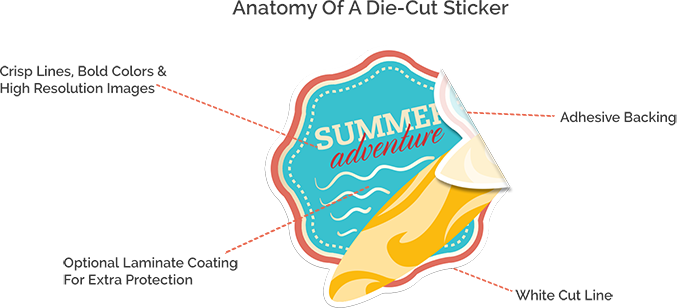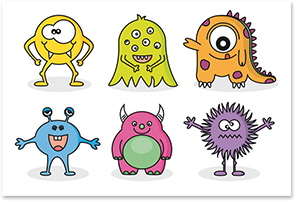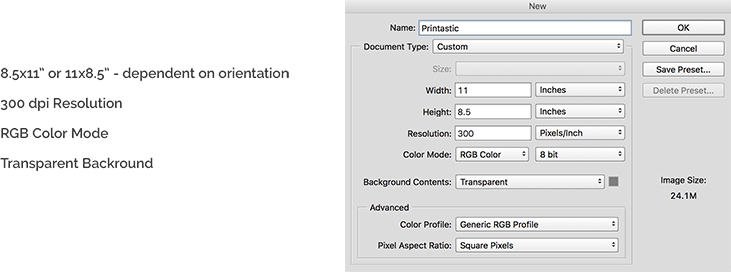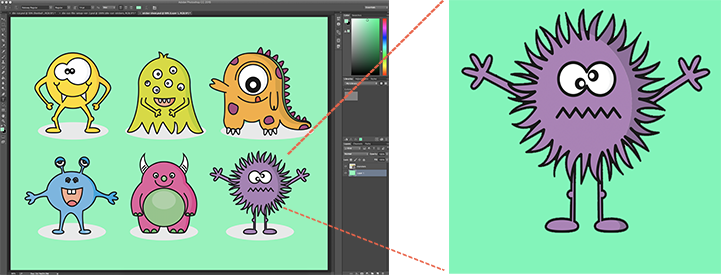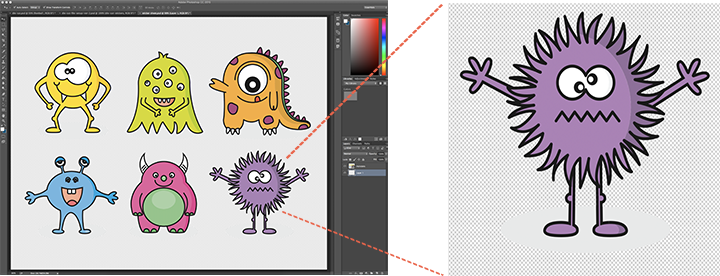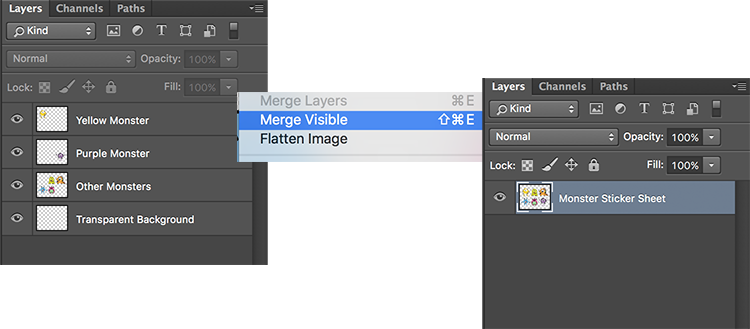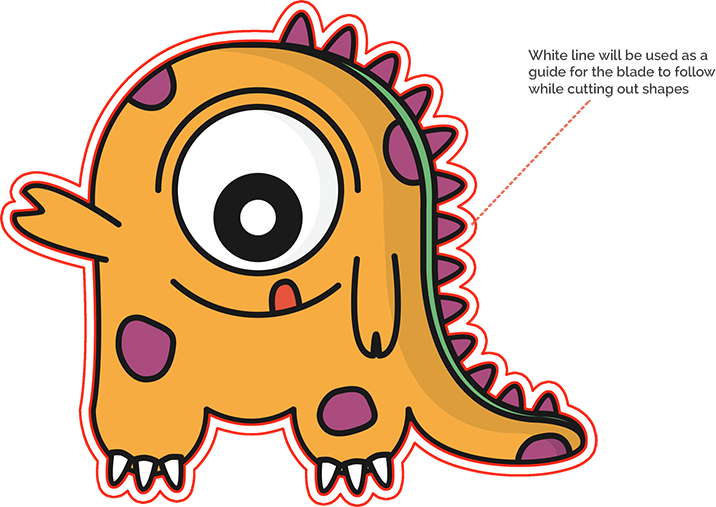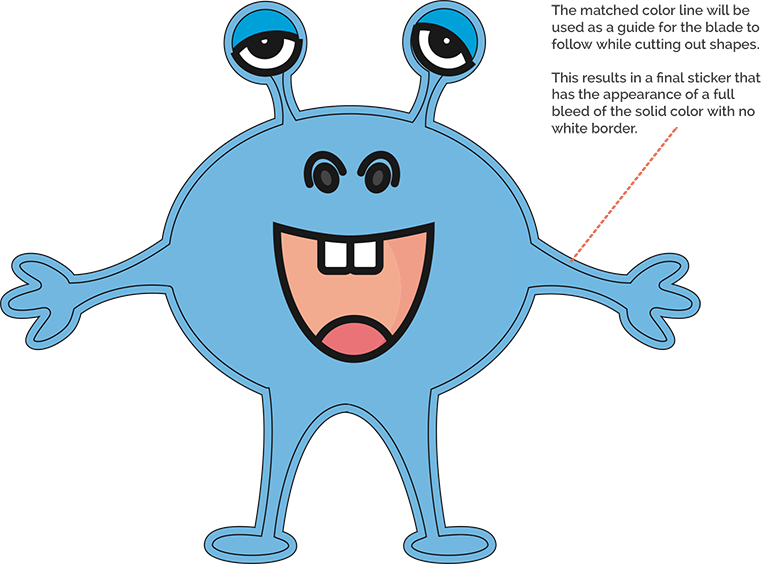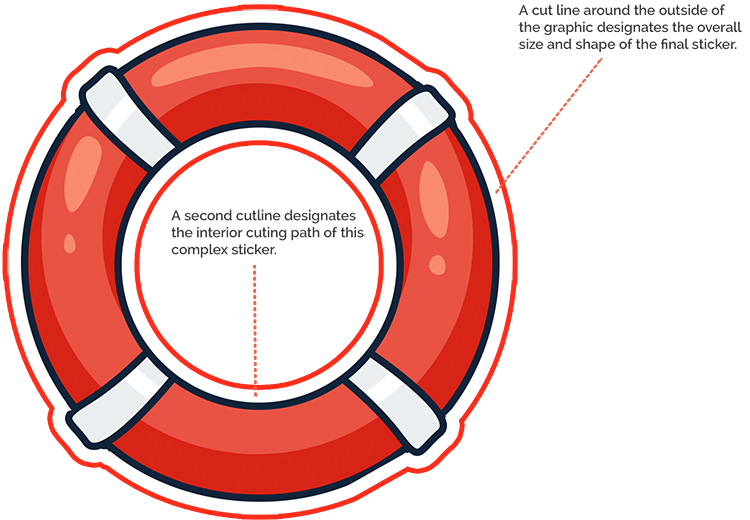Additional Information For Advanced Users
What Is A Cut Line?
Vector graphic images are fairly simple. The difficulty lies when creating a contour around a bitmap image or certain portions of the bitmap (for example, there may be white space surrounding the image). Cutting individual images out of a larger sheet with tight tolerances is very exacting work, therefore, correct image preparations are vitally important.
Before producing Die-Cut stickers, the images must be made rady for cutting by first generating a line or contour around each image that is to be cut out. This line - called a cut contour line - is added to indicate to Printastic’s cutting equipment the shape of the image that needs to be cut out and indicates the path which the blade should follow.
In the example below, a white cut line has been added to the monster sticker that was supplied to Printastic. The finished sticker will have a 1/16” to 1/8” border around it when removed from the backing.
Custom Color Cut Lines For A Bleed Effect
Advanced graphic designers may wish to utilize cut contours in various colors to give the illusion of a full bleed or to accomplish other visual effects. While Printastic utilizes white cut contour lines as standard, we have the capability to accept files that have custom cut contour lines applied.
In the example below, the customer desires a “full bleed” effect, and has therefore added a custom cut line that is the same color as the monster. The 1/16“ to 1/8” border still exists on the final sticker, but is invisible since it’s the same color as the image it surrounds.
Designer Information:
Please note that adding custom cut lines is a procedure that requires an advanced level of proficiency in vector design applications. When submitting an image with a custom color cut line, Printastic must receive one of the following pure vector layered formats: .EPS / .AI / .PDF / .SVG
When ordering Die-Cut stickers with custom color cut lines, please contact Printastic via live chat to discuss your printing requirements and to review your file setup procedure.
Multiple Cut Lines For Complex Stickers
While typical Die-Cut stickers consist of a single cut contour around the perimiter of the image, it is possible to cut smaller shapes out within a larger image. For exmaple, a sticker of a donut may have the hole in the middle cut out, giving it a highly polished appearance. In order to perform this action, multiple cut lines must be applied to the image.
In the example below, the custoimer wants a donut sticker with the middle removed. Cut lines have been added around the outside and the inside to designate to cut to be performed. The final sticker will have 1/16“ to 1/8” borders around both cut areas and the middle of the donut will be removed. Multiple cut lines may be white or use the custom color method described above.
Designer Information:
Adding complex cut lines is not performed by Printastic and should only be attempted by advanced vector design application users. When submitting an image with complex cut lines, the digital file supplied must be one of the following pure vector layered formats: .EPS / .AI / .PDF / .SVG
Advanced graphic designers that wish to provide files with complex cut patters should contact Printastic via live chat to discuss requirements and to review your file setup procedure.
